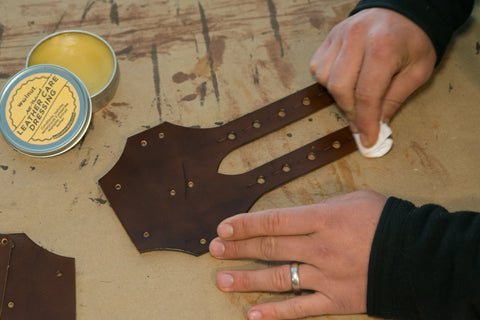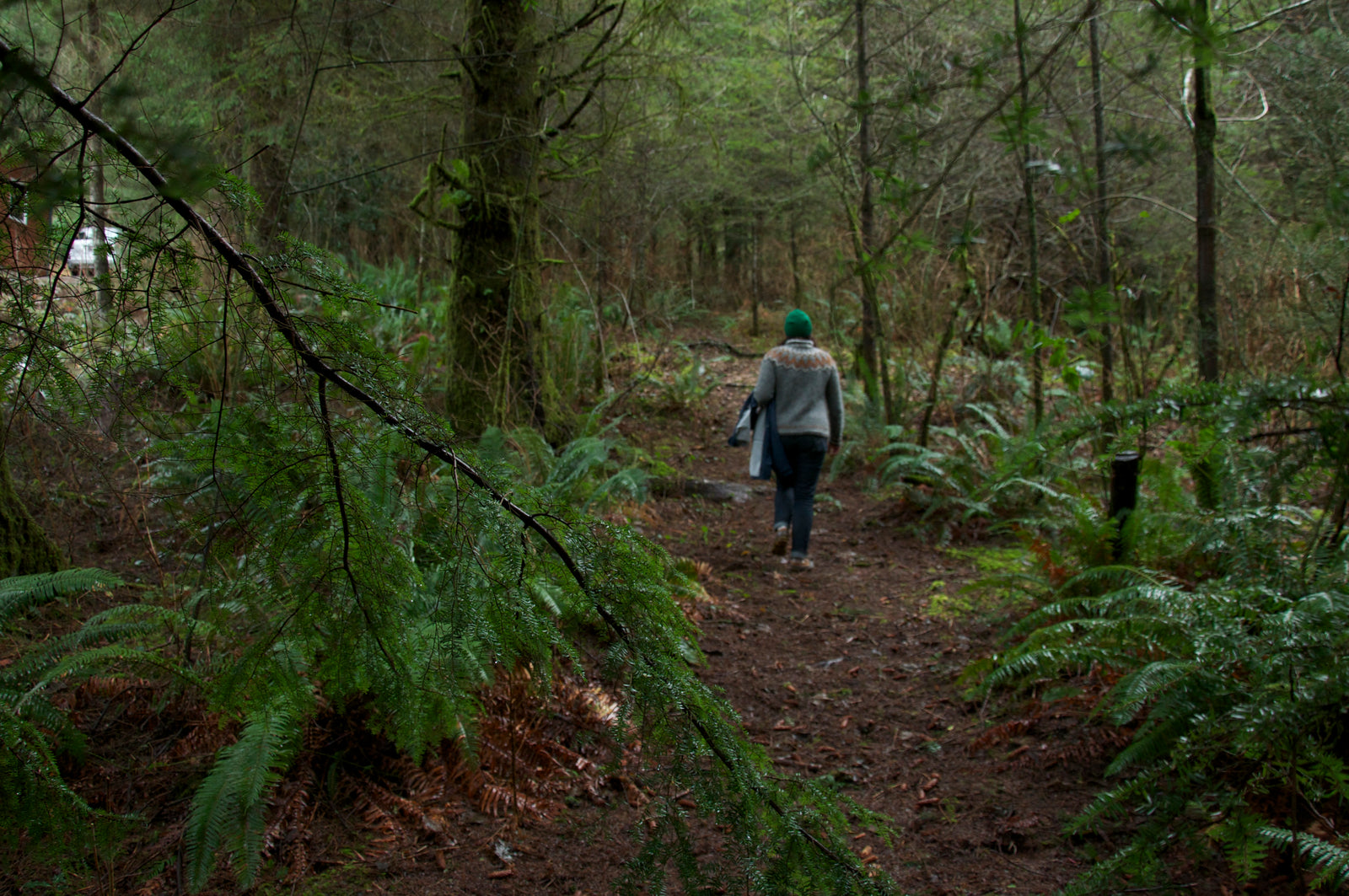
(What is Vegetable-Tanned Leather? Learn more.)
(Shop our house-made Leather Care Conditioner.)
Our vegetable-tanned leather does great in all weather, rain or shine. It is the same kind of old-fashioned heritage leather used in equestrian gear (horse tack), so it is meant to be used outdoors and in the elements!
Being left out in a hot, direct sun is much harder on this kind of leather than wetness and rain; however, after getting wet the leather needs time to dry or else it will mildew.
Vegetable-tanned leather gains more of a luster, darkens a bit, and becomes softer with use (unlike garment leather, which fades and becomes more brittle with time and use). Un-dyed vegetable-tanned leather (our "Natural" color) will "tan" or darken in sunlight.
Vegetable-tanned leather just loves to be touched - the oils in your hands naturally condition the leather the more you use it. In fact, some of our products that are constantly handled, like our bicycle sew-on bar wraps, may rarely ever need a conditioning treatment - if they look lustrous and shiny from your hands touching and sweating on them regularly, then no need to worry.
Whether it's veg-tan or bridle leather, we recommend conditioning the leather occasionally, especially if it starts to look dry, using the care recommendations below.
If your product is starting to look dry, take the time to give it a little care with a conditioning treatment. Care for it as little as once every year or two for occasional use with good storage conditions and as much as once a quarter for heavy outdoor use in the direct sun with dry humidity.
If your leather gets dirty, clean it with diluted mild castile soap (like unscented Dr. Bronners) or unscented dishwashing liquid. Dilute the soap/liquid at least 1:10 (it should not be sudsy), and allow to fully dry before conditioning.
Keep in mind that conditioning leather usually darkens it slightly. Don't worry, this is normal. In fact, doing this several times in a row can speed up the natural darkening process that happens during aging and can also help you fine-tune the color match, if for example, you're trying to match an aged Brooks saddle.
Want to know more about leather? We wrote a FREE "Leather 101" educational course.
Want to know even more? We wrote a book! Check out the Idiot's Guide to Leather Crafts, written by Geoff and Valerie.
...for workshop updates, new designs, sales and
10% off*
*code will be in welcome email
does not apply to sale items
